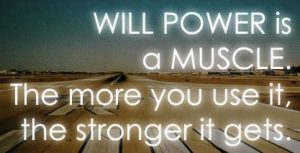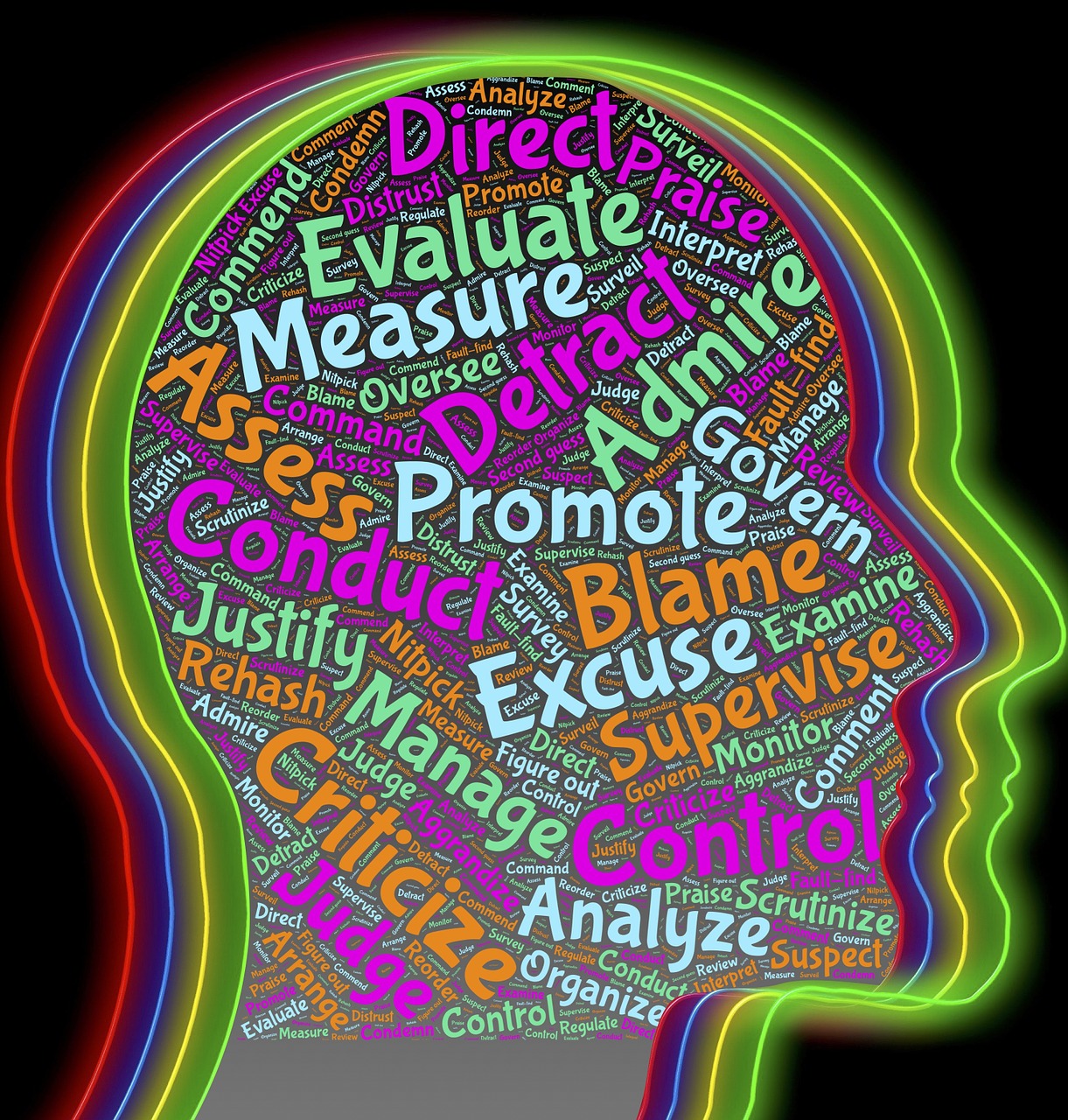[vc_row][vc_column][vc_column_text margin_bottom=”10″]Willpower is a really really useful quality to have. In athletic terms, it can make the difference between consistently making good decisions that support your training regimen and help you achieve your goals, or it can leave you stuck in a rut or plateau that you can’t seem to find a way out of.
Willpower used to be thought of as something that had a limited reserve, so once you’ve run out of willpower, you are more likely to lose control and give in to whatever urges you are facing. Nir Eyal, in a recent article on this subject says, “Psychological researchers have a name for this phenomenon: it’s called “ego depletion.”” This theory may explain why some times will power seems to be stronger than others; however, recent studies lend credence to the notion that we may have been thinking about willpower in a way that actually could be hurtful for us, and end up increasing the chances of us losing control as our focus fails.
 Over the past few years, research at the Toronto Laboratory for Social Neuroscience has explored the science of willpower, or self-control. Their research suggests that willpower is not a finite factor, rather that it acts like an emotion. In the same way that we don’t run out of joy or anger as these emotions flow in and out of our consciousness, willpower also has that same flow. Emotions are elicited depending on what is happening to us at any time, and the majority of our decisions are based on our emotional state at that time.
Over the past few years, research at the Toronto Laboratory for Social Neuroscience has explored the science of willpower, or self-control. Their research suggests that willpower is not a finite factor, rather that it acts like an emotion. In the same way that we don’t run out of joy or anger as these emotions flow in and out of our consciousness, willpower also has that same flow. Emotions are elicited depending on what is happening to us at any time, and the majority of our decisions are based on our emotional state at that time.
Seeing willpower as an emotion can change the way we view our ability to focus and achieve consistency. We can then understand that if we are struggling with distractions, and not able to consistently hit our training goals, this may not be an indicator of a lack of willpower, it could instead be a signal that something else is missing. As Eyal describes it, “Feelings are our bodies’ way of conveying information our conscious minds might miss.” Chronic loss of focus and willpower could be an opportunity to assess and listen to your emotions.
Instead of attempting to battle through a tough patch of training where willpower seems at a low level, it could be a good moment to assess if there is something else that you could switch up that would re-ignite your willpower, and help you regain focus, commitment, and consistency. Eyal eloquently states, “We can power through unenjoyable tasks for a while, but we’ll never be our best if we ignore what our feelings are telling us. By listening to our lack of willpower as we would an emotion—as a helpful decision-making assistant working in concert with our logical capabilities—we can find new paths that may not require us to do things we fundamentally don’t want to do.”
So what can we do when hit a period where our willpower seems to have waned? Here are four key tips to restore your training so that willpower is at abundant levels:
- Focus on what gives you joy
We will find it much easier to give effort and achieve consistency when we include things that we really enjoy. One example from my own training is to not make everything in a training session all about hard work pursuing a specific task. I really don’t enjoy 400m and 800m repeats on a track. However, at a specific point in a training cycle, pace or speed sessions on a track can be really beneficial both physiologically, and mentally. I used to run 220 yards at school, and love that distance. I will often include just a couple of 200’s in a workout so that I get to enjoy that part, and it really helps me return to the next session motivated and focused. - Use your imagination
Our imagination is an incredibly powerful tool, and one that we seldom use in a positive, constructive, way. You can use your imagination to help you increase your willpower. Your body responds to imagined situations in the same way that it does to real experiences. Visualize yourself completing a key task that you think will challenge your willpower, and imagine that you flow through the task, session, or event. Visualize every detail and watch as you remain focused and continue with the task until you have successfully completed it. Notice that you were able to do all of this with less effort than you thought was possible. - Think about something else
Every time an unwanted thought roles into your mind, think of something else that is more attractive to you. When it’s cold and windy on a training run, I often think of the greeting I will get at home from my wife or our puppy dog when I arrive through the door.
This technique also places you in control of your thoughts, so starting a pattern of responses that will empower your thought processes. - Break it down into chunks
A huge task or event can get to feel overwhelming when you look at the enormity of the job at hand. One way to overcome this is to break the task into small, manageable chunks, and then arrange the smaller chunks into a progression that will deliver success.
Our friend and colleague Melody Fairchild started her running career as a young athlete in Boulder by going out for a run on a canyon road, and made a mark in the dirt where she turned around to run back to home. Each day she would set out with the intention of running just a little further the next day. Melody progressed to become arguably the best female high school athlete the US has ever produced, and won the BOLDERBOULDER citizens race for three straight years at ages 15-17.
[/vc_column_text][vc_separator][vc_column_text margin_bottom=”10″]Terry Chiplin, the visionary behind activacuity, provides positive coaching sessions for clients, working with athletes to enable a positive focus on their status and goals. He can also create personalized guided imagery sessions for clients, delivered as an mp3 audio file that you can listen to on multiple devices.
activacuity provides a daily dose of positive guided imagery or visualization sessions. Find out what you can do when you make that mind-body connection – check out our subscription options here.
 You can help raise funds for the American Cancer Society by becoming a subscriber to activacuity®. We are thrilled to announce that from February 1, 2017, we are a partner with the American Cancer Society.
You can help raise funds for the American Cancer Society by becoming a subscriber to activacuity®. We are thrilled to announce that from February 1, 2017, we are a partner with the American Cancer Society.
Use the code activacssupport2017 when you subscribe for an annual membership through our website, and $10 of your subscription goes to the American Cancer Society. We will also provide a free subscription for activacuity® to a cancer survivor for each paid annual subscription received. The Society will establish a list of cancer survivors that will benefit from the partnership, using the Patient Navigator Program.
Our goal is to raise $5,000 for the Society over the partnership period.
[/vc_column_text][/vc_column][/vc_row]









